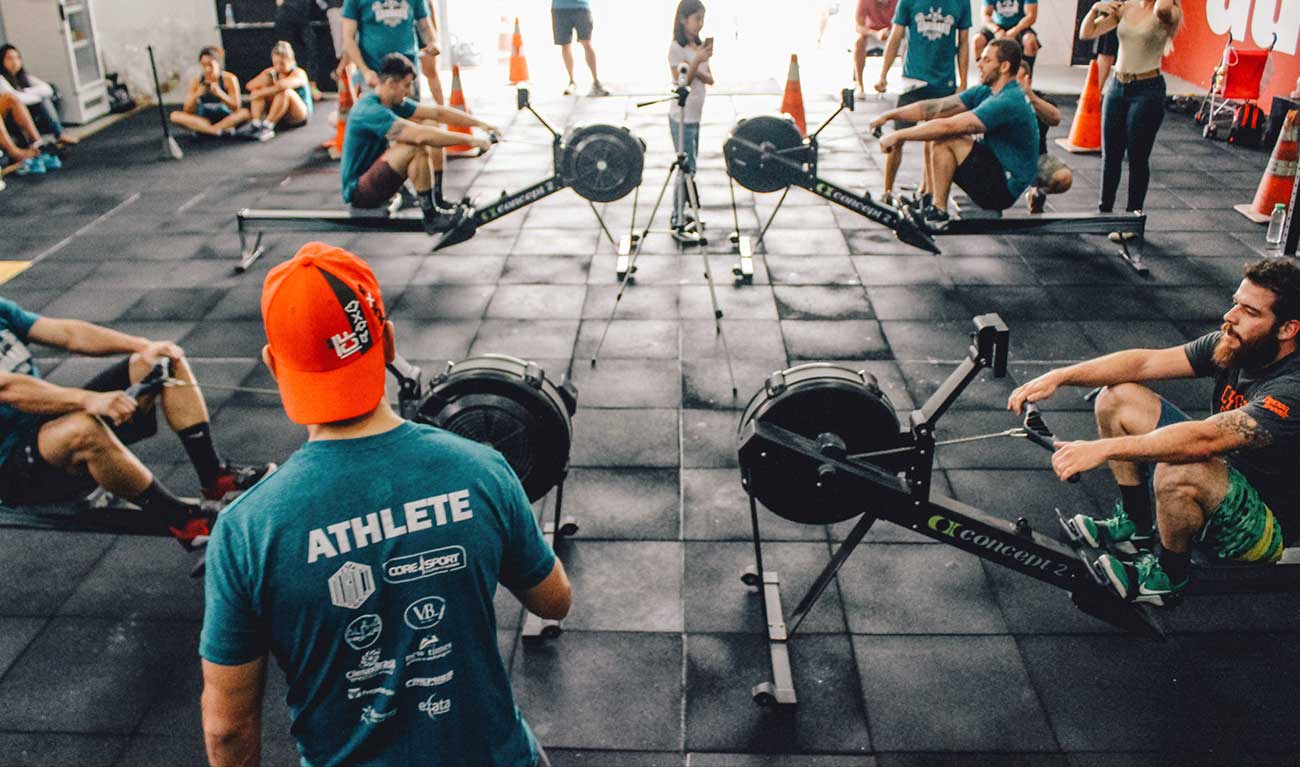
A swollen abdomen can be caused by different circumstances, such as food intolerances or overexertion during physical activity and, in this post, we are going to place special emphasis on this last point: why after a workout we suffer from abdominal swelling. And is that who hasn’t experienced a swollen abdomen after exercising? Today we are going to tell you everything you need to know to reduce abdominal swelling quickly.
Post-workout swelling
Even though our main objective when we exercise is to reduce the circumference of the swollen and hard abdomen, on several occasions, if we perform the exercise in the wrong way, or make overexertion, we can end up finding the opposite effect.
This is because when we increase the pressure on the muscle group of the abdomen, we can cause a distortion of what we know as the linea alba, and that makes it exponentially easier for us to suffer abdominal swelling.
Another reason that causes abdominal swelling when we exercise is overexertion, especially when we train after a period of a sedentary lifestyle since the muscles tend to swell.
For this reason it is good to observe the abdomen before and after with exercise and to know if it can cause us negative effects.
Muscle swelling
On some occasions, when we finish a series of exercises, especially strength exercises, we begin to notice the sensation that our muscles are swollen. This has a basic physiological explanation, and that is that this process is basically due to the accumulation of fluids in the area due to the increase in heart rate produced by the effort.
When we start exercising two basic things happen:
- The heart increases its heart rate in order to send more blood to the muscle, and blood pressure rises as the arteries receive more blood.
- When the muscles contract naturally and automatically during exercise, they put pressure on the arteries, and this tension causes water to be expelled, which is located around the muscle compartments, and is what produces that feeling of muscle swelling.
This effect also produces pressure, which makes the veins come closer to the skin, so it is normal for us to notice our veins more after training.
Abdominal swelling
Abdominal swelling can be derived from various diseases such as constipation, gas accumulation, or food intolerance without knowing it. The latter manifests with abdominal swelling and weight gain in response to food intolerance.
But although it is true, even if it is surprising, if we perform an abdominal exercise in the wrong way, you can end up obtaining the opposite effect of the one we want to obtain since, if we increase the pressure on the group of muscles of the belly, we can distort the linea alba, and this translates into the creation of a space between the recti that, when deformed, facilitates the appearance of abdominal swelling.
Leg swelling
In the extremities, especially in the legs, sports can cause the famous chronic compartment syndrome. This syndrome is an exercise-induced muscle-nerve condition that causes pain, swelling, and sometimes disability in the affected leg muscles. This condition is very common in athletes and runners, although anyone can suffer from it, and can even cause knee or ligament injuries.
This condition can be reduced if we stop exercising completely, or if we do low-impact activities to alleviate the symptoms; although it is usually a temporary relief. If despite the rest you still have inflammation or pain, it is advisable to go to the doctor so that he can treat the condition.

Biceps and triceps swelling
The biceps and triceps muscles are the main flexors and extensors of the arm at the elbow joint.
These are made up of critical muscle groups in any sport, particularly racquet sports and sports that involve throwing or lifting.
Normally, the swelling that occurs in the biceps and triceps is caused by conditions such as tendinitis. These swellings occur in the tendons that cross these muscles.
The swelling can occur in two areas:
- If we talk about the biceps we can notice the inflammation in the shoulder.
- If we talk about the triceps we can see the inflammation reflected in the elbow.
Treatment options can include anything from rest, ice, or elevation exercises; We can even resort to medication and physiotherapy if a medical professional so prescribes it.
How long can abdominal swelling last?
The swelling of the abdomen usually appears 24 hours after the exercise, and can even appear up to 2 days. These usually last between 2 and 3 days, although this depends on the degree of micro-tears or micro-lesions that have occurred in the abdominal muscles during physical activity.
Yes, it must indeed be commented that the duration of this abdominal swelling and stiffness depends to a large extent on the physical preparation of each person. People with more physical activity will have less feeling of swelling, and it will last for a shorter time.
In general, if the abdominal swelling is caused by the shoelaces, it will last as long as we have discussed; but, in the case of micro-lesions, it could last longer, even requiring medical assistance.
How to relieve abdominal swelling?
To relieve abdominal swelling, it is very important to make a good muscle recovery, that is, to help the tissues to renew more quickly, since the body needs a rest time that, if it is not respected, prevents muscle recovery from being correct.
To combat abdominal swelling there are different methods, both physical and
mechanical, among which we find active or passive regeneration processes. Some of the methods that we can mention are the following:
Therapeutic massage
It is one of the most used methods in the field of physical therapy. Currently, it is used to relieve inflammation, immune effects, or psychological problems.
Hydrotherapy
This therapy consists of subjecting the patient to different temperatures in each immersion. This immersion reports greater benefits when overtraining has occurred. It is widely used after football matches to regenerate micro-lesions.
Regenerative workouts
This method consists of performing exercises that promote recovery, that is, taking walks that do not involve a high-intensity effort. This work must not exceed 55% of the maximum performance performed.
Electrostimulation to relieve abdominal swelling
People who perform a great physical effort also resort to supplements such as alpha fit’s electromotive fitness, and it is that this method allows the recovery of the muscles by increasing the blood flow with each electrical impulse.
Thanks to this technology, it is the muscle tissues that are oxygenated and can help the regeneration of the affected muscle fibers after training. In addition, as extra help, electrostimulation helps to relax those overloaded muscles that suffer from a feeling of swelling. It also successfully treats muscle pain, as it releases endorphins. This method can be done in different ways:
- Passive regeneration: Onnafit uses electrostimulation technology passively, that is, without movement.
- Active regeneration: The alpha fit system is designed for active regeneration with electrostimulation. All we have to do is carry out our usual physical activity, but incorporate alpha fit electrostimulation suits as a complement to the training.

How to avoid abdominal swelling?
To prevent our abdomen, and the body in general, from swelling, it is advisable to follow a series of recommendations such as:
- Eat a good diet: If the muscles are sore, it means that they need a good dose of protein, healthy fats, and carbohydrates. Without forgetting in any case to drink enough water. It will make our bodies suffer less and be more prepared for physical activity.
- Avoid sudden movements during training, as this can facilitate the appearance of micro-lesions and increase the risk of swelling.
- Warming up is the best ally to avoid bloating: In this way, we will progressively prepare the body for the movements that it is going to make in training.
- Respect the necessary rest: Overexertion of the body is the main risk factor for promoting swelling of the abdomen; that is why it is necessary to listen to the needs of our body and take care of ourselves.
- Exercise carefully: This is the best recommendation we can give, and it is that we must be aware that when we have not practiced sports for a long time, or we are simply going to carry out training sessions that are not adequate to our abilities. If we overload ourselves we can have effects such as inflammation in the muscles. If we want to do another type of training or sport, we must follow the rule of increasing the activity by 10% until we reach our goal.
Conclusions
In short, abdominal swelling is caused by overexertion of our abdomen during training, which causes micro-tears in the muscle fibers. These ailments can also be seen reflected in the rest of the body. That is why we give you the necessary keys to be able to combat swelling since there are different methods, both physical and mechanical, among which we find active or passive regeneration, or electrostimulation, in which we can find multiple benefits.






